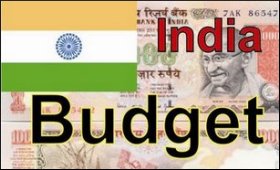|

|
Budget of fiscal prudence and inflationary push
|
|

|
|
| Top Stories |
 |
|
|
|
Sushma Ramachandran | 27 Feb, 2010
A budget of fiscal prudence, but with underlying inflationary potential. This sums up Finance Minister Pranab Mukherjee's federal budget for 2010-11 presented in the Lok Sabha Friday -- the fifth for the 74-year-old politician.
It has kept strictly to the roadmap of the 13th Finance Commission and looks firmly at bringing the fiscal deficit down to 5.5 percent in 2010-11 from 6.7 percent for this fiscal.
At the same time, the hike in oil sector duties is bound to give a huge push to inflation, especially since the Kirit Parikh committee reform proposals have not been tackled. Duties on oil will go from consumer to exchequer, bypassing the oil companies which still need a hike in retail product prices to end under-recoveries.
The sensitive index (Sensex) of the Bombay Stock Exchange (BSE) has been remarkably bullish on the budget, largely because of low expectations. Given the fact that the rollback of the fiscal stimulus was widely anticipated, the markets were not shocked.
Thus, the negatives of a 2 percent rise in excise duty and increase in minimum alternate tax (MAT) had already been factored in by the markets. In fact, there has been greater volatility on Dalal Street over the past month than after the budget presentation.
Besides, the tax relief for the middle class in terms of revising the slab rates and providing higher savings incentives through infrastructure bonds brought extra cheer as it meant more money in the hands of consumers.
The return to fiscal prudence has brought a sense of relief not only to the stock markets but equally to foreign investors who have been wary about the high budgetary deficit.
Mukherjee made it clear in his speech that there is no going back on the path towards fiscal responsibility, even though the norms had been relaxed in the wake of the global recession. A closer look at the budget, however, shows that the finance minister is placing his reliance on substantial revenues from the public sector disinvestment process to keep the deficit in check.
As much as Rs.40,000 crore ($8 billion) is sought to be raked in from divesting public sector equity. Such confidence may ultimately not be misplaced since only a few public issues have brought in about Rs.25,000 crore ($5 billion) for the exchequer in the current fiscal, according to the budget speech.
Other highlights of the proposals are the focus on agriculture and the relative slowing down of expenditure on the social sector. On the first, it is clear that the lag in agricultural growth is causing grave concern as well as a realisation that enough has not been done to bring about reforms in this sector.
The plan to bring a green revolution to the eastern region is at least 30 years old, so one can only be hopeful that this time round the schemes are finally successful. As for the social sector, there are some outlay hikes but these are not substantial. This is a correct move as it is time to review implementation of these schemes, especially the rural employment guarantee scheme which despite success needs to rectify shortcomings.
Infrastructure is another area that continues to occupy Mukherjee's attention, given the need to ensure that economic growth continues its momentum. The enhanced investment on roads development is a welcome move especially since this sector is a driver both for industry and employment.
The biggest negative of the 2010-11 budget proposals, however, is in the oil sector.
The decision to restore excise and customs duties on crude oil and products to previous levels merely improves budgetary finances. It does not deal with the losses oil firms have to suffer on account of having to sell products at below cost.
The finance minister concedes that decisions on the Parikh committee will come later, indicating that a fresh hike in petrol and diesel prices is on anvil since the prospect of oil bonds has been ruled out. Thus inflationary pressures on the economy are set to intensify in the coming months.
All in all, the budget is probably the best one could be expected under the existing circumstances. The finance minister had to walk the tight rope while gradually withdrawing the fiscal stimulus measures and simultaneously ensuring that economic recovery continues apace. A tough balancing job done fairly well.
* Sushma Ramachandran is an economic and corporate analyst. She can be reached at sushma.ramachandran@gmail.com
* The views expressed by the author in this feature are entirely his/her own and do not necessarily reflect the views of SME Times.
|
|
|
| |
|
|
|
|
|
|
|
|
|
|
|
|
|
|
| |
| Customs Exchange Rates |
| Currency |
Import |
Export |
US Dollar
|
84.35
|
82.60 |
UK Pound
|
106.35
|
102.90 |
Euro
|
92.50
|
89.35 |
| Japanese
Yen |
55.05 |
53.40 |
| As on 12 Oct, 2024 |
|
|
| Daily Poll |
 |
 |
| Do you think Indian businesses will be negatively affected by Trump's America First Policy? |
|
|
|
|
|
| Commented Stories |
 |
|
|
|
|
|
| |
|